
Meet the Papercast CMS Layout Catalogue: A must have resource for sharing visually impactful passenger information
We’re excited to tell you about the Papercast Content Management System (CMS) Layout Catalogue, an…
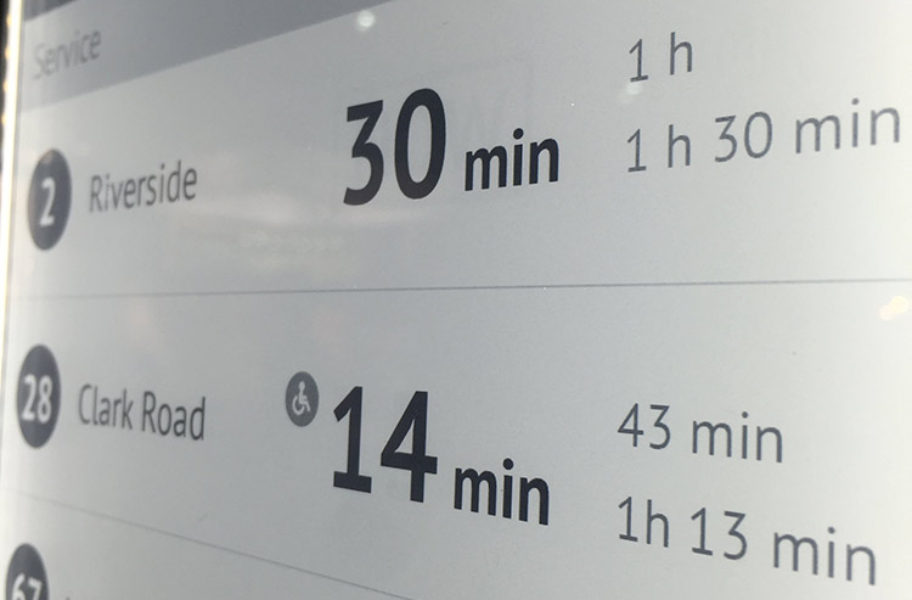
Things have come a long way in the world of public transport digital signage.
Only a few years ago we were banging the e-paper industry drum to raise awareness of the virtues the technology.
Well, the effort has certainly paid off as we have seen major transport hubs around the world – UK, France, Germany, Italy, Poland, Greece, Mauritius, Kuwait, Abi Dhabi, Dubai, Singapore, Japan, Australia, New Zealand, USA and more – implement e-paper passenger information systems. And this covers just a selection of the hundreds of Papercast e-paper projects worldwide.
The reality is that e-paper is now becoming the de-facto technology for applications where transport providers need to get dynamic or real-time information to customers in a sustainable manner, and locations where mains power is not readily available.
Having said that, it doesn’t do any harm to remind you of the benefits of e-paper compared to other signage technologies. In this blog, we compare the two other most prominent display types in the public transport arena – LCD and LED.
Don’t get us wrong. There is a time and a place for every technology.
Papercast e-paper displays are quite often part of a broader signage solution that includes LCD panels. Our technology will serve one aspect of the requirement, whereas LCD panels serve another. There is a place for both of us in this world.
But when it comes to providing dynamic information in outdoor environments – and indoor for that matter – where you don’t need the pizzaz of scale, colour and movement, we believe nothing else can compete with e-paper.
As you can see e-paper boasts many benefits over the alternatives, making it impeccably well suited to long-term outdoor use.
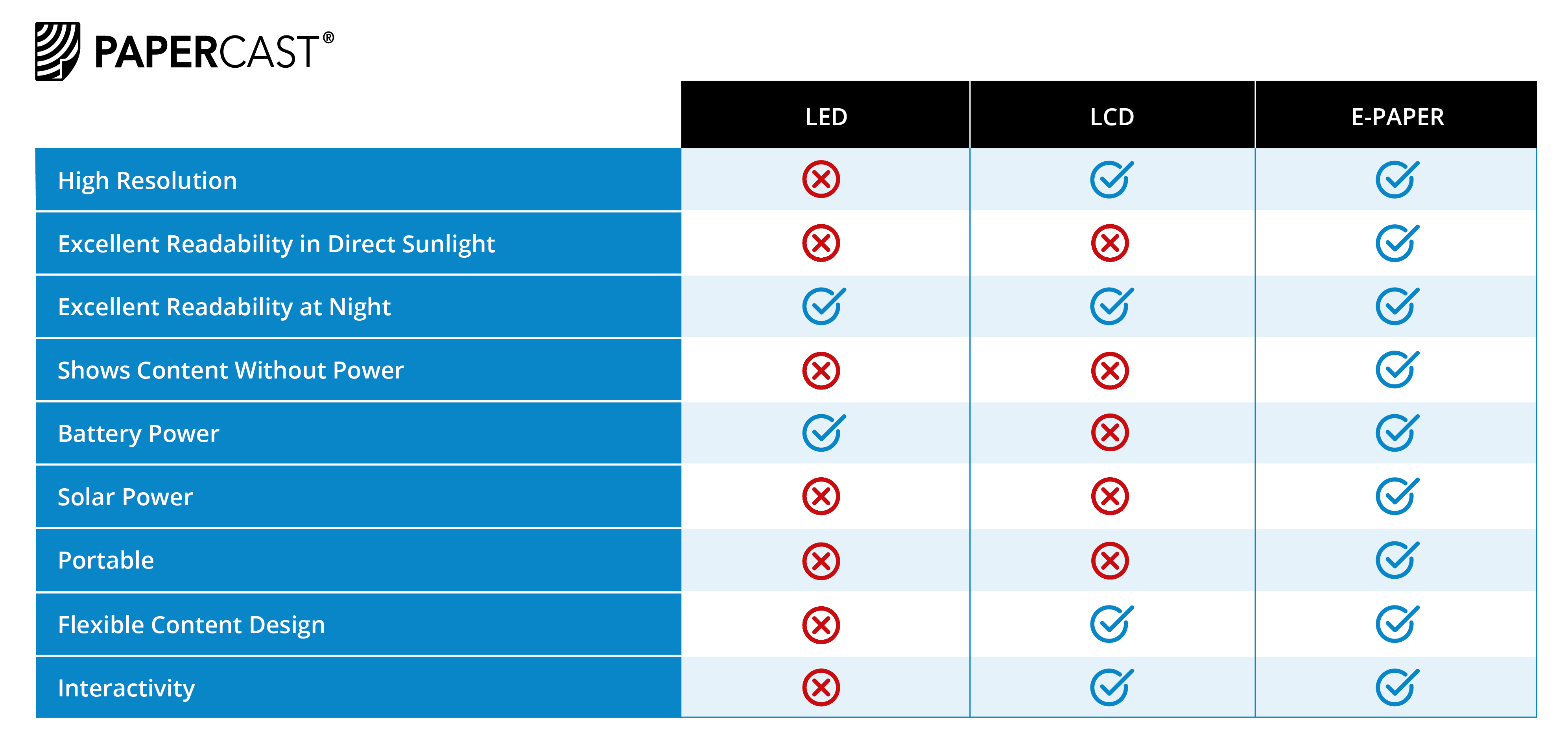
E-paper combines two unique qualities: bistable technology and a reflective display.
These fundamental characteristics underpin some of the major advantages of e-paper signage over other display technologies. We explore this in more depth below, but first watch this quick introduction from E Ink.
E-paper is the only display technology that delivers high resolution content in direct sunlight without any degradation in clarity. It also has a much wider viewing angle than any alternative, so viewers can see the content when looking from the side.
It is as clear as it would be on real paper. No pixilation or distortion. You need to see it to believe it:
There is no finer example of the crystal-clear resolution of e-paper than when showing Arabic languages. The detailed script is shown with paper like clarity on Papercast displays:
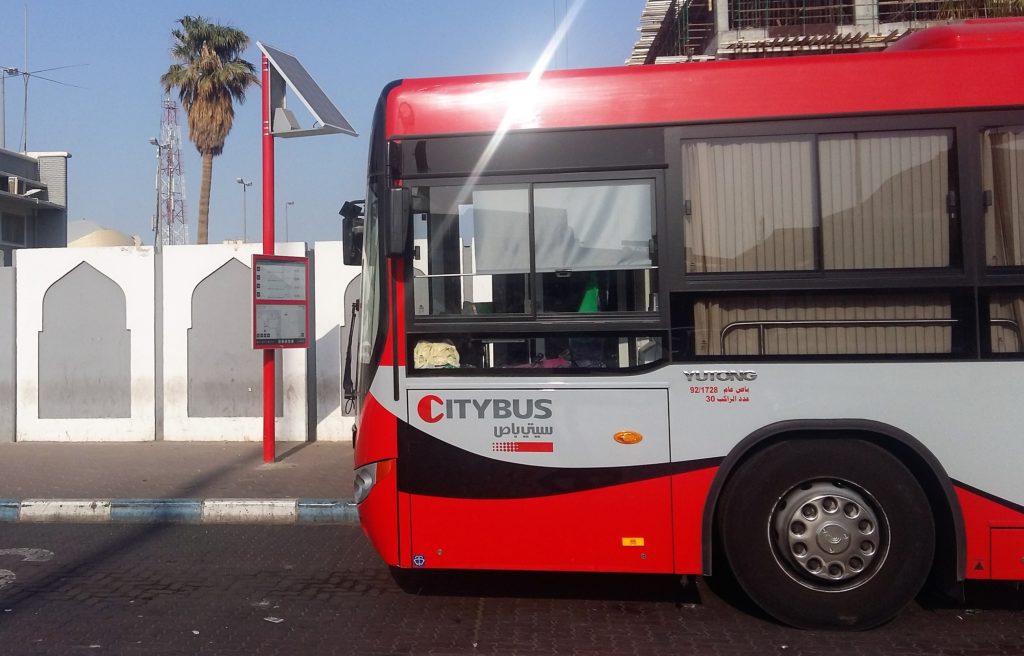
Example of Papercast in an Arabic Speaking Environment (Kuwait)
While we are in Kuwait, we should also point out that Papercast is exceptionally stable in extreme environments, able to withstand the excessive heat of summers in the Middle East and the bitter winters of the Northern Hemisphere.
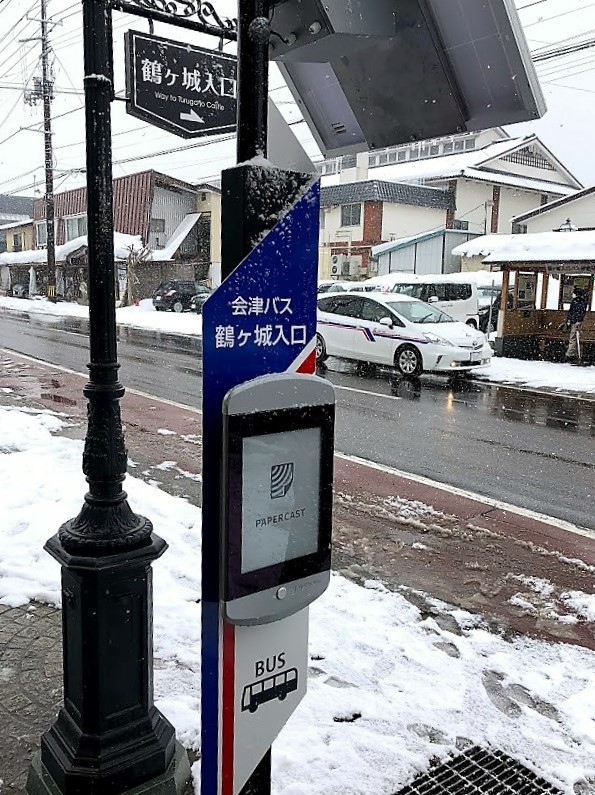
Example of Papercast in Cold, Low Daylight Winter Climates (Japan)
We’ve all been there – trying to shade our mobile phones from the sunlight to read our messages or giving up trying to use our tablets or laptops outside! The fact is that LCD displays have poor visibility in sunlight (unless you ramp up the power to put out more light to compensate).
E-paper is reflective (in contrast, LCD screens are ‘emissive’ where a backlight illuminates pixels). This feature makes e-paper displays easier on the eyes, provides a wider viewing angle and makes content perfectly visible even in direct sunlight.
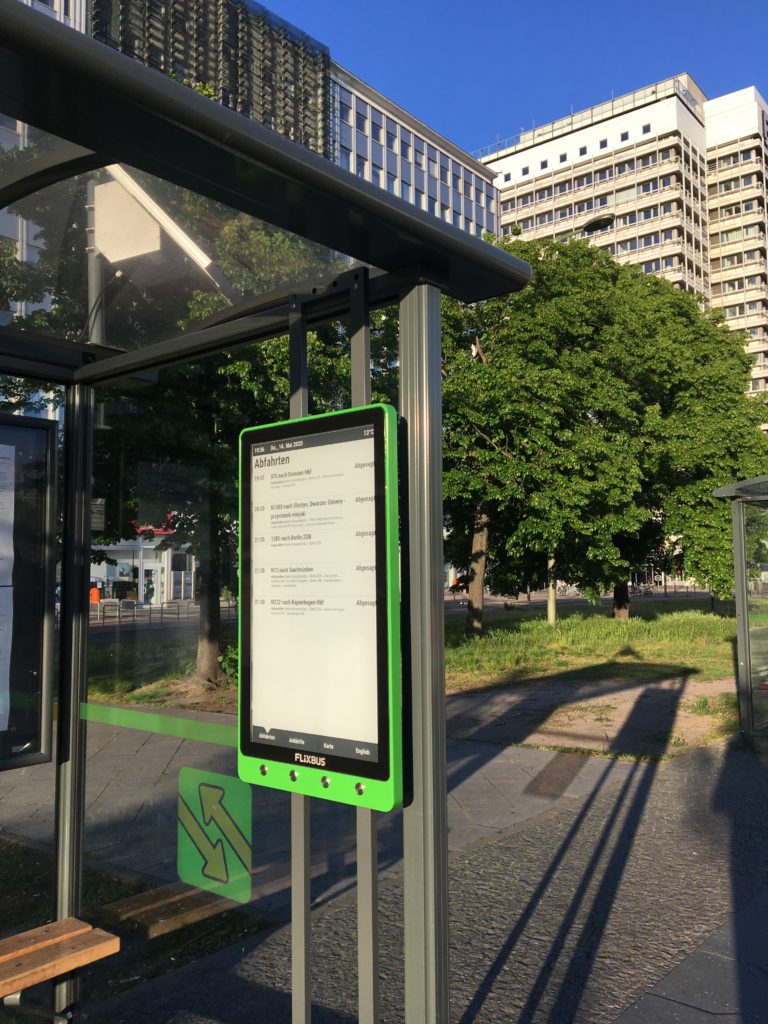
Example of Clear Content in Direct Sunlight (Germany, Flixbus)
Where LCD fails during the day, it works fine in ambient lighting or at night (we’ll give it that). E-paper is reflective, so it needs a light source in the same way that normal paper does. With low power embedded front LED illumination, e-paper displays can be read in all lighting conditions.
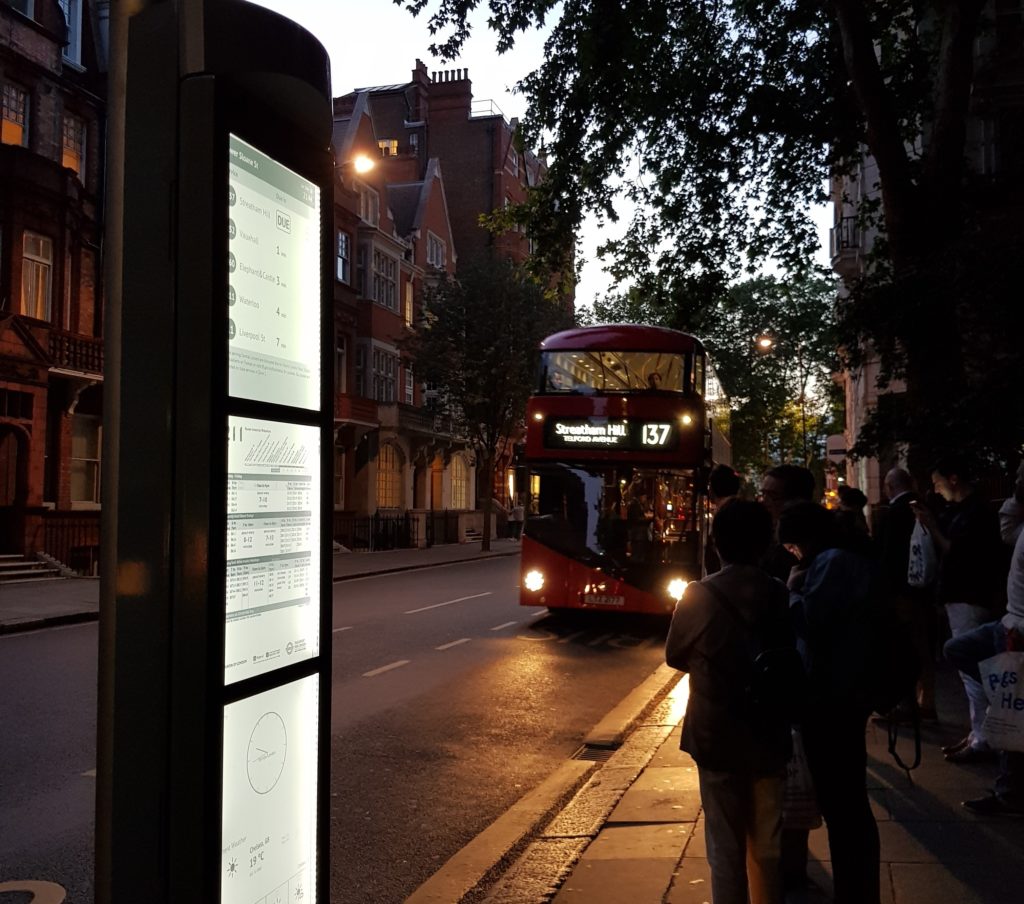
Illuminated Papercast Display in London (TfL)
As we have already mentioned, e-paper uses bistable technology, this means it takes no power at all to display an image and only a little power to change an image (in contrast LCD screens need refreshing around 30-times per second). This makes electronic paper one of the lowest power display technologies in the world.
LED and LCD are power-hungry and require a mains power source to operate. Because e-paper is extremely energy efficient, it can operate entirely on batteries.
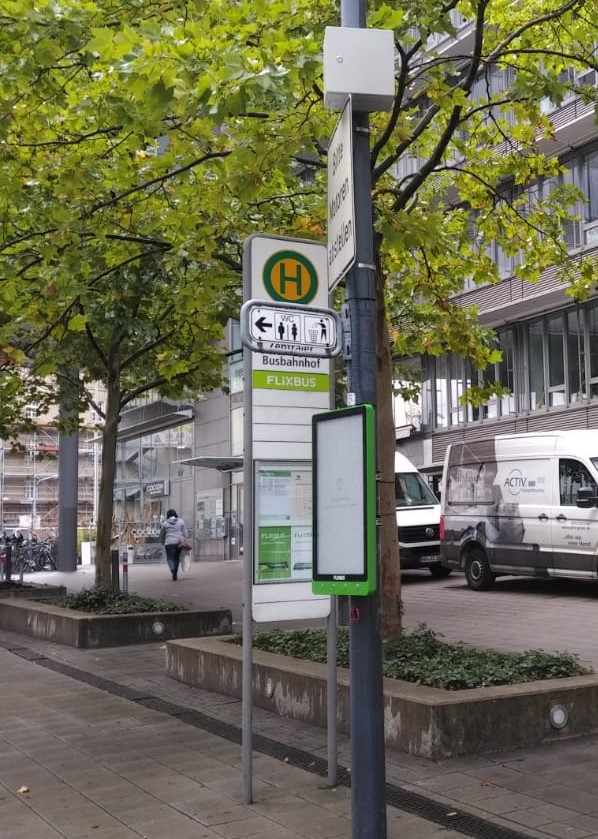
Batteries need recharging, right? This is straightforward for signage in indoor settings, and in outdoor settings e-paper can be entirely solar powered in all climates, making it extremely cost-efficient and environmentally friendly to operate.
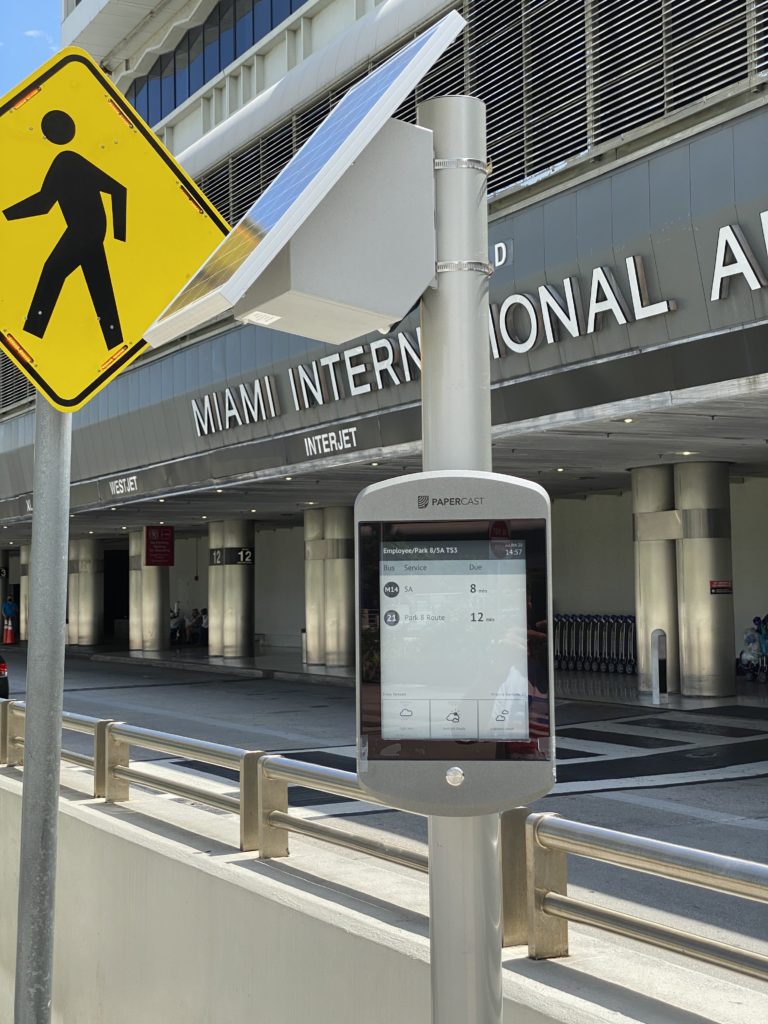
Solar Powered Display in Sunny Miami (MIA)
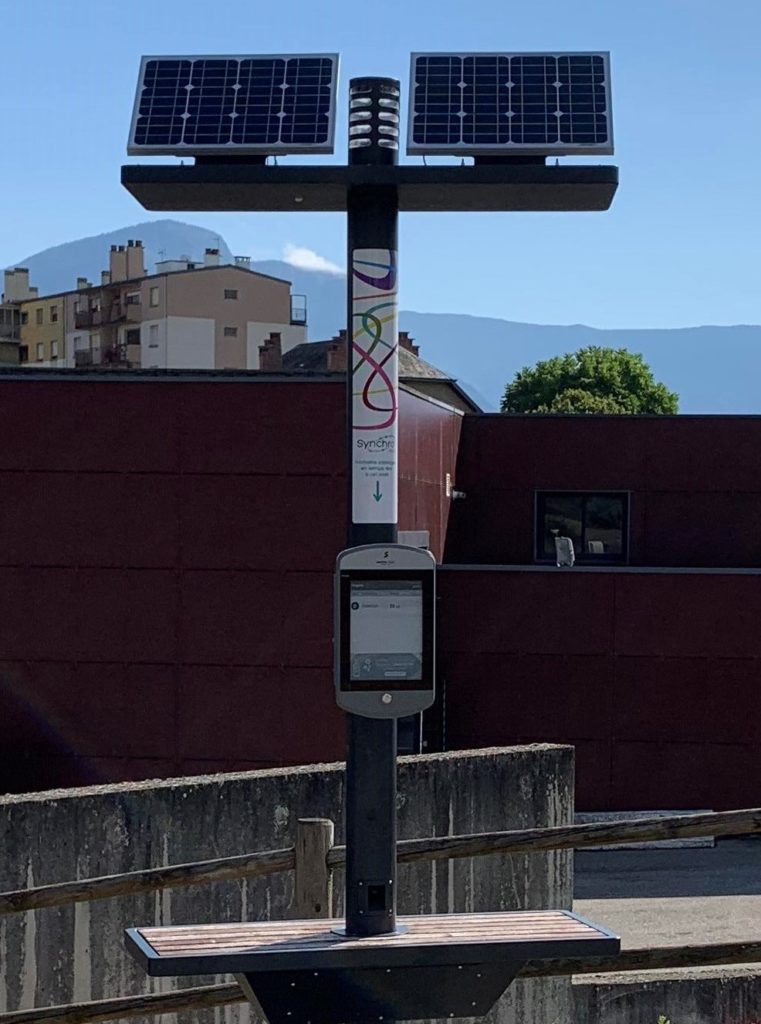
Double Solar Display for Low Light Winters (Chambery, France)
Another advantage of e-paper’s bistable technology is that, unlike any other display technology available, it can display an image with zero power supply. This means if there is a power disruption or battery issue for any reason, users won’t be faced with a blank screen and instead a static image, such as a timetable.
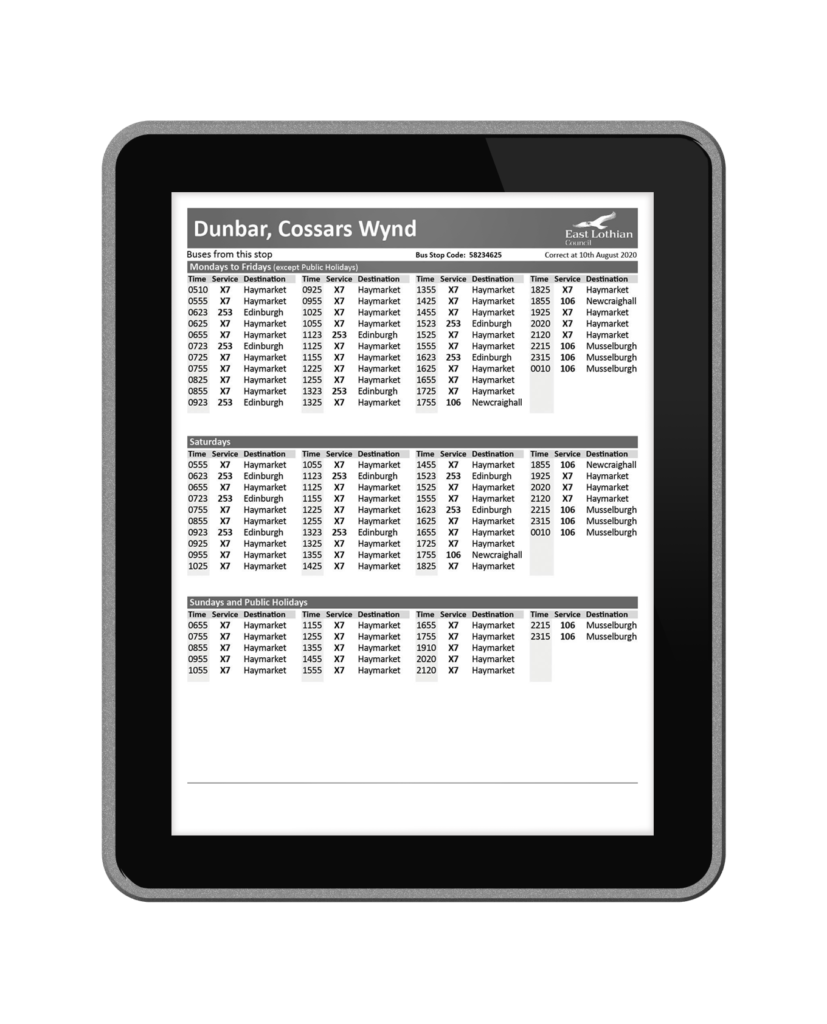
E-paper displays are completely stand-alone, meaning they don’t need to be physically connected to anything, such as a power source, this makes them very easy to move around and perfect for environments that need portable digital signage. We are seeing demand for this in a number of environments including airports and traffic works.
Photo withheld for this one, we have an exciting announcement coming soon
When it comes to content, the displays can show absolutely anything and everything – it is a blank sheet of paper! While this is the case for LCD, it is not so much the case for LED screens where there is a limit to the number of services and level of detail you can show, and because you can’t show any visual/graphical information, you still need paper timetables and schedules. In fact, we recently won an award for our design system.
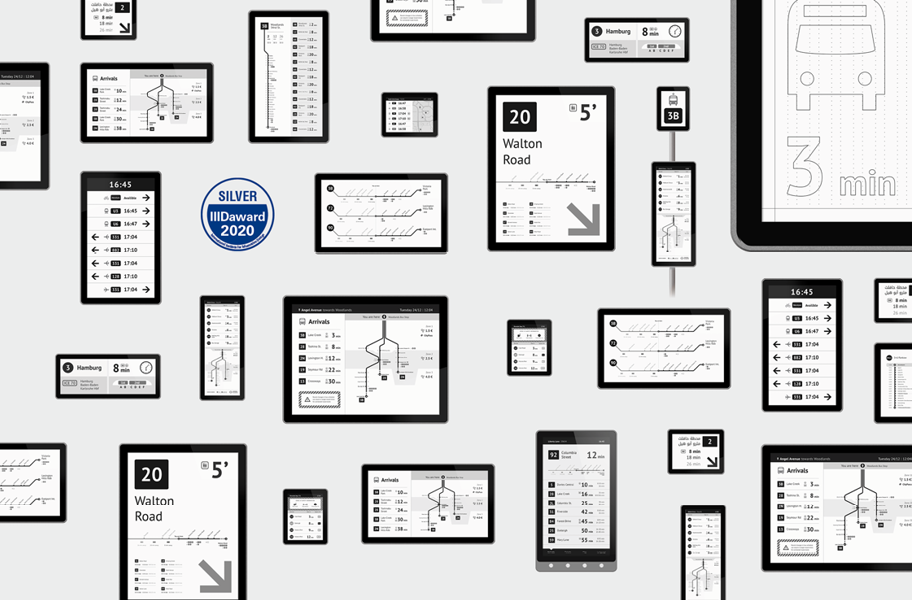
Papercast Passenger Information Design Library Examples
Papercast allows its customers to choose a display size and then multiply the content potential by four with the addition of interactive buttons. This allows the user to browse up to four screens of content. This is not an option for LED, although LCD screens are available in touchscreen and interactive formats in locations where mains power is available.
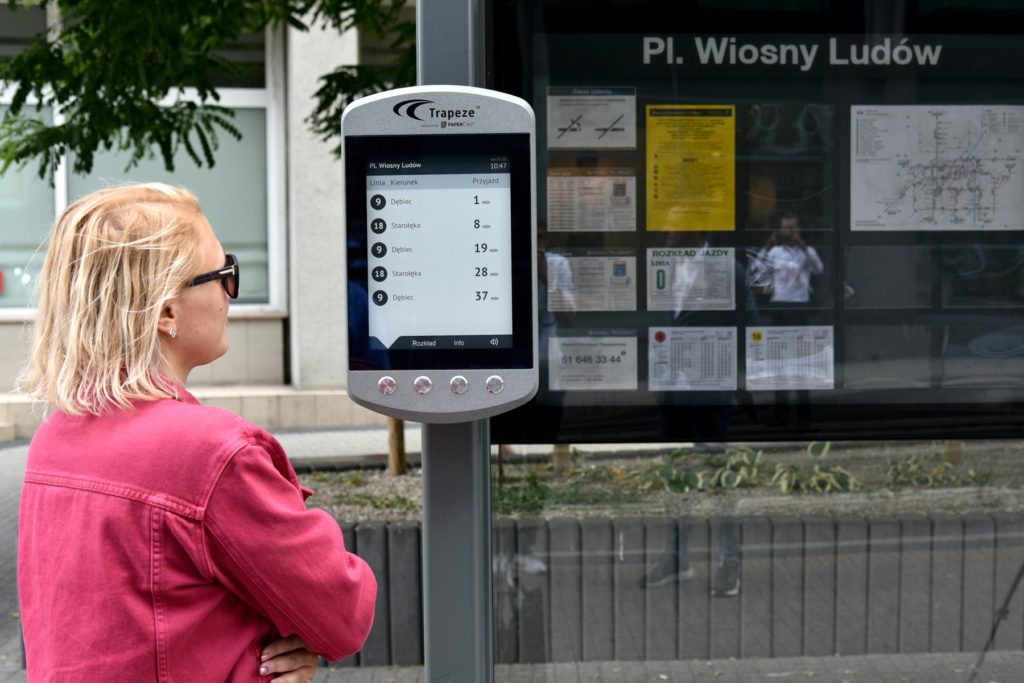
Interactive Display in Poland (Trapeze)
We now know how e-paper delivers incredibly low power consumption and high screen visibility, and it is these extraordinary characteristics make e-paper perfect for outdoor public information displays. The potential of e-paper is staggering, and so it really is no surprise that we are seeing such strong demand from across the global transport sector.
If you would like further information or arrange a demo, please contact us.

We’re excited to tell you about the Papercast Content Management System (CMS) Layout Catalogue, an…
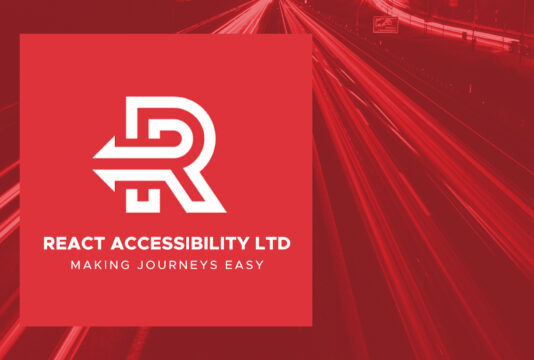
The REACT Trigger System is now available on Papercast displays We’re excited to share that…